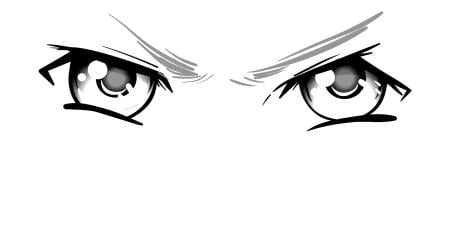Labeling a patient “difficult” was described in the medical literature as early as 1967 [1] in an article entitled “The Difficult Patient.” Psychiatrist M. Y. Ekdawi observed:
It is usual to encounter, in any large mental hospital, a group of patients who are considered by the staff to be difficult. This opinion is slowly formed, but, once established and repeatedly expressed in nursing reports and medical records, it rarely alters and may have a powerful influence on the patient’s career in [the] hospital [2].
Ekdawi, using a case-control methodology, characterized these patients as attention-seeking and uncooperative.
The phenomenon of health care professionals labeling patients as “difficult” is not limited to psychiatric settings and literature. In the broader medical literature, patients have been described in similar terms as “hateful” [3] or “heartsink” [4]. The description of this phenomenon in different health care settings during decades of practice and as explored in the health professions literature beckons further investigation.
This issue of the AMA Journal of Ethics seeks to accomplish two things. First, it engages in reflexive interrogation of the so-called “difficult patient” as a discursive figure in medical literature and practice. Second, this issue invites health professionals and trainees to examine their individual and collective responses in situations in which it is tempting to apply the label “difficult” to a patient.
Interrogating the Label
Similar to Ekdawi, several investigators have characterized medical, social, and personal features of so-called “difficult” patients [4-6]. In recruiting participants or categorizing them as “heartsink,” “frustrating,” or “difficult,” these studies assume that clinicians’ experiences, from which these labels derive, are caused by something pathological about a patient’s behavior, communications, or character. Of note, focusing on characterizing clinicians’ experiences in these ways tends to represent patients negatively and in ways that can disadvantage them during their health care experiences, particularly during clinical encounters. An alternative to the assumptions made in these studies suggests that a clinician’s perception of a patient—as “difficult” or otherwise—is co-produced by interactions among a patient, clinicians, and health care settings [7-11].
Three articles in this issue explore how the term “difficult” is a product of more than just a clinician’s experience of a patient’s behavior, communications, or character. Federica Lucivero shares findings from her qualitative research on patients’ increased access to electronic health records in the UK, arguing that infrastructure and protocols of health care systems contribute to difficult patient-physician interactions. Rather than focusing narrowly on a patient’s behavior, communications, or character, Elizabeth S. Goldsmith and Erin E. Krebs emphasize the importance and value of characterizing which qualities of clinicians and health care settings can make clinicians more likely to label a patient “difficult” and how training and workplace environments might be modified to nurture better relationships. Finally, Jonathan B. Imber outlines physicians’ behaviors, changes in medical education, and changes in science that might contribute to difficult physician-patient relationships and encounters.
In the podcast, Autumn Fiester cogently analyzes the “difficult patient” label. Fiester contends that the use of the label places too much responsibility for the conflict on the patient, often ignores context and the physician’s own contributions, and leaves little hope for healing the relationship. And Merel Visse provides five visual images that represent these and other conflicting forces that can influence patient-clinician interactions.
Practical Guidance
Another part of interrogating the label “difficult” is to scrutinize health professionals’ affective tendencies in these situations. Clinicians’ affective responses have been considered an important element of what makes a patient “difficult.” For example, in James E. Groves’s landmark article about “hateful” patients, published in the New England Journal of Medicine in 1978, physicians’ responses are characterized as “dread,” “aversion,” and “depression” [12]. The article about “heartsink,” referenced earlier, defines these patients in terms of how they “exasperate, defeat, and overwhelm” or “distress” physicians [13]. Several articles in this issue offer practical guidance about how clinicians and trainees can become aware of and manage these kinds of affective responses to patients.
The three cases narrate situations in which patients might be characterized as “difficult.” Micah Johnson analyzes an interaction between a patient dissatisfied with his pain management and an impatient resident; he argues that a physician’s duty to treat a patient confers upon him or her responsibility to repair a damaged relationship with that patient. Monica Peek, Bernard Lo, and Alicia Fernandez respond to a case in which a woman refuses to be examined by a man during his obstetrics/gynecology clerkship and consider some of the ethical dimensions of patients’ requests for gender-concordant care. And Andrew Thurston considers a case in which a physician-parent challenges a decision by her son’s physician.
Four other articles provide strategies, techniques, and insights for clinicians to use in difficult interactions with patients. Richard B. Gunderman and Peter R. Gunderman critically analyze Groves’s articlereflective learning can catalyze practitioners’ moral development and professional identity formation, equipping them to navigate problematic encounters with patients. Utilizing a virtue ethics framework, Michael Hawking, Farr A. Curlin, and John D. Yoon encourage educators to foster courage and compassion among trainees to prepare them for difficult interactions with patients. Finally, Denise M. Dudzinski and Carrol Alvarez appraise communication strategies physicians could use to repair damaged relationships with patients.
Conclusion
This issue of the AMA Journal of Ethics seeks to help clinicians and trainees investigate and interrogate some of the assumptions about and implications—for themselves and their patients—of using the label “difficult.”
References
-
Ekdawi MY. The difficult patient. Br J Psychiatry. 1967;113(498):547-552.
https://doi.org/10.1192/bjp.113.498.547PubMed -
Ekdawi, 547.
-
Groves JE.
Taking care of the hateful patient.
N Engl J Med.
1978;298(16):883-887.
Ekdawi, 547.
- O’Dowd TC. Five years of heartsink patients in general practice. BMJ. 1988;297(6647):528-530.
- Lin EH, Katon W, Von Korff M, et al. Frustrating patients: physician and patient perspectives among distressed users of medical services. J Gen Intern Med. 1991;6(3):241-246.
- Hahn SR, Kroenke K, Spitzer RL, Brody D, Williams JB, Linzer M. The difficult patient: prevalence, psychopathology, and functional impairment. J Gen Intern Med. 1996;11(1):1-8.
-
Dudzinski D, Timberlake D. Difficult patient encounters. University of Washington School of Medicine. https://depts.washington.edu/bioethx/topics/diff_pt.html. Updated March 12, 2014. Accessed November 11, 2016.
- Haas LJ, Leiser JP, Magill MK, Sanyer ON. Management of the difficult patient. Am Fam Physician. 2005;72(10):2063-2068.
-
Krebs EE, Garrett JM, Konrad TR. The difficult doctor? Characteristics of physicians who report frustration with patients: an analysis of survey data. BMC Health Serv Res. 2006;6:128. https://bmchealthservres.biomedcentral.com/articles/10.1186/1472-6963-6-128. Accessed November 11, 2016.
- Hinchey SA, Jackson JL. A cohort study assessing difficult patient encounters in a walk-in primary care clinic, predictors and outcomes. J Gen Intern Med. 2011;26(6):588-594.
- Fiester A. The “difficult” patient reconceived: an expanded moral mandate for clinical ethics. Am J Bioeth. 2012;12(5):2-7.
-
Groves, 883.
-
O’Dowd, 528



